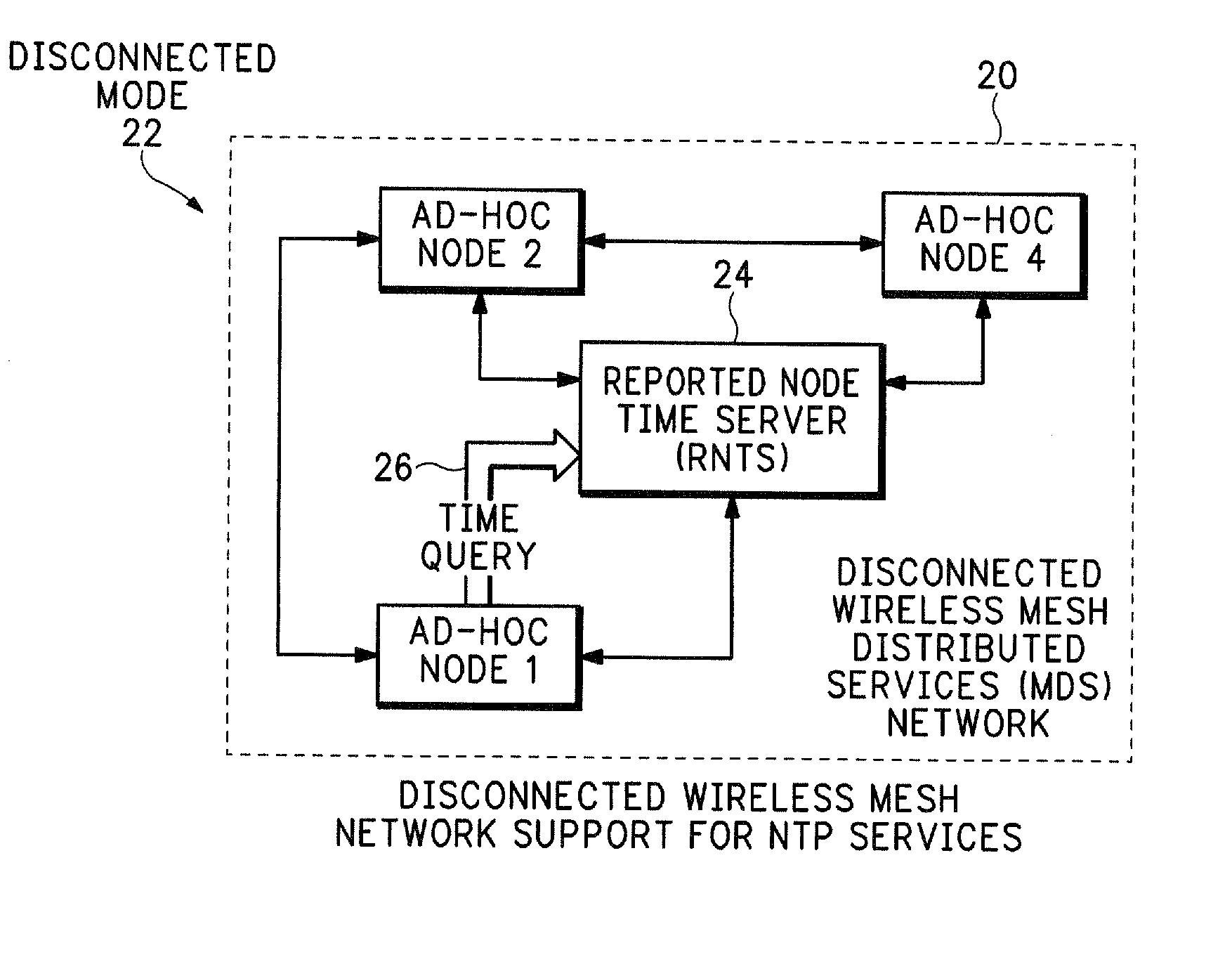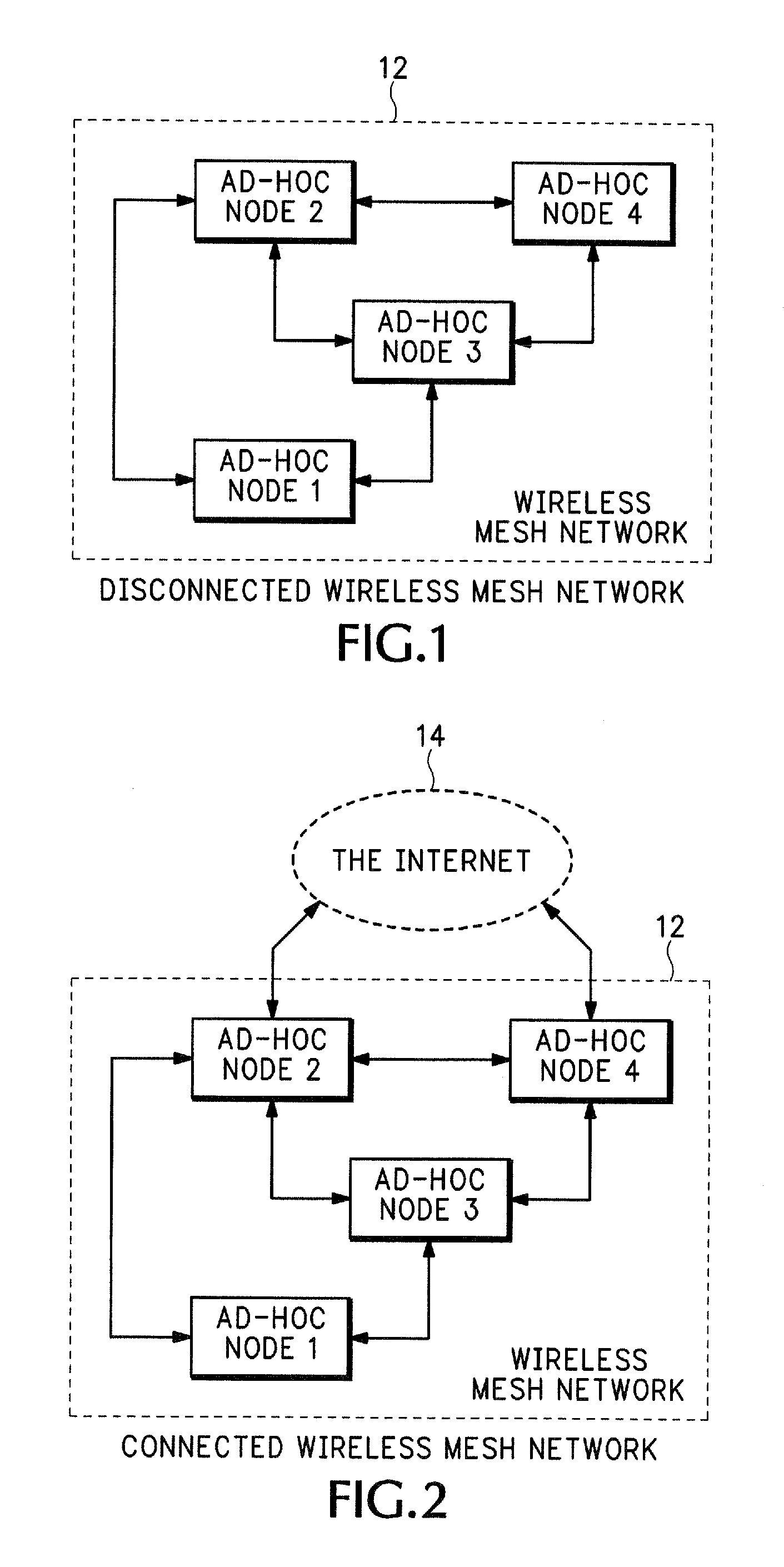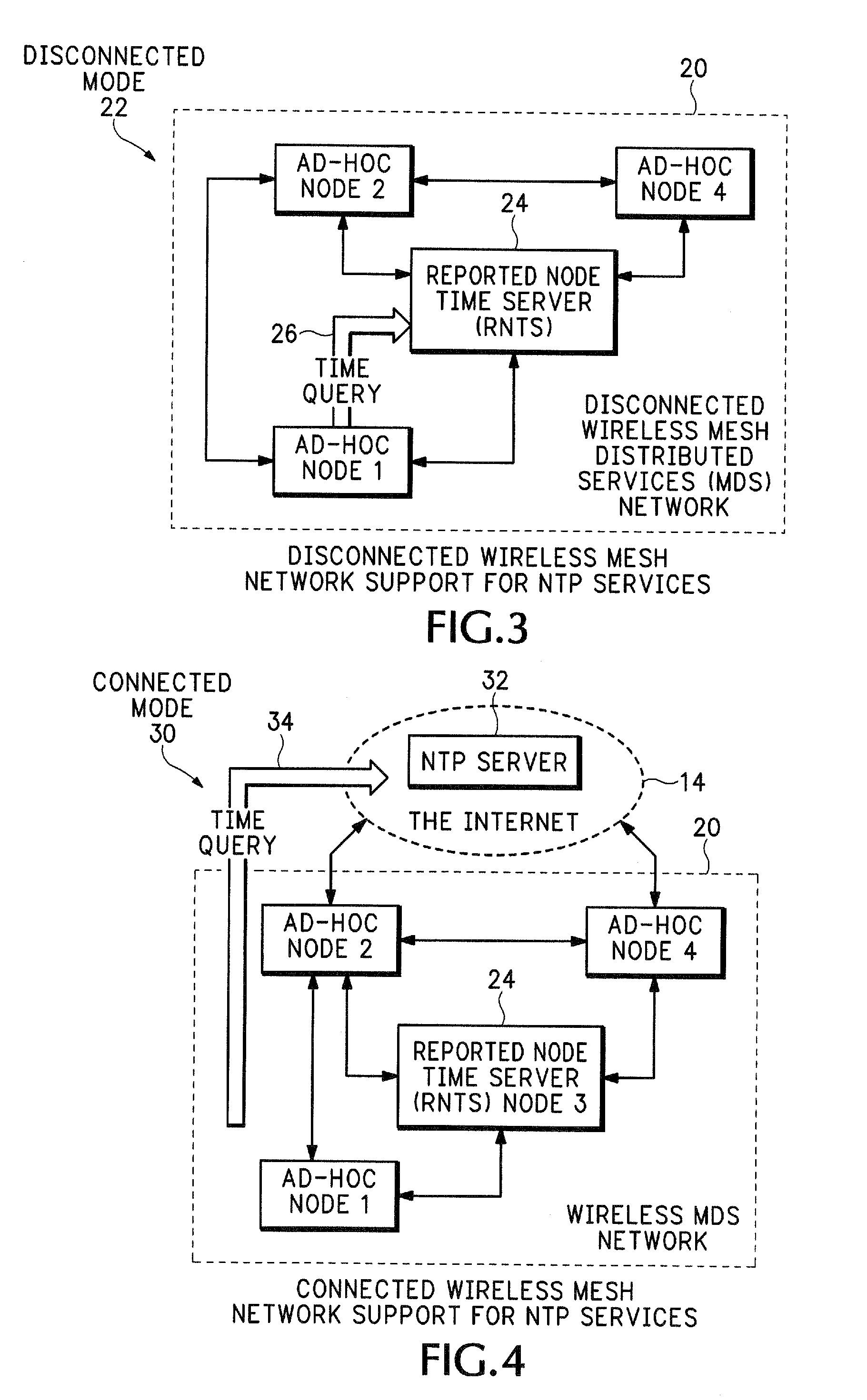Distributed services for mesh networks
a technology of distributed services and mesh networks, applied in the field of wireless mesh networks, can solve the problem that central ip services are not always available in a wireless mesh network
- Summary
- Abstract
- Description
- Claims
- Application Information
AI Technical Summary
Benefits of technology
Problems solved by technology
Method used
Image
Examples
Embodiment Construction
[0022] Mesh Distributed Services (MDS) support any combination of different Internet Protocol (IP) services in a mesh network, that include, but are not limited to, the Network Time Protocol (NTP), the Domain Name System (DNS), and the Dynamic Host Configuration Protocol (DHCP). The MDS mimicks centralized Internet services through collaborative cooperation between individual mesh nodes.
[0023]FIG. 1 shows a mesh network 12 that is currently disconnected from an Internet infrastructure. Nodes 1, 2, 3 and 4 are all computing devices that are capable of sending, receiving, and forwarding IP packets directly to other nodes. For example, the nodes 1-4 can be Personal Computers (PCs), Personal Digital Assistants (PDAs), cellular telephones with IP capabilities, digital pagers, or any other IP device that may need to operate in a mesh network.
[0024] Any of nodes 1-4 may communicate directly with other nodes in the mesh network 12. Alternatively, the nodes 1-4 may communicate indirectly t...
PUM
 Login to View More
Login to View More Abstract
Description
Claims
Application Information
 Login to View More
Login to View More - R&D
- Intellectual Property
- Life Sciences
- Materials
- Tech Scout
- Unparalleled Data Quality
- Higher Quality Content
- 60% Fewer Hallucinations
Browse by: Latest US Patents, China's latest patents, Technical Efficacy Thesaurus, Application Domain, Technology Topic, Popular Technical Reports.
© 2025 PatSnap. All rights reserved.Legal|Privacy policy|Modern Slavery Act Transparency Statement|Sitemap|About US| Contact US: help@patsnap.com



